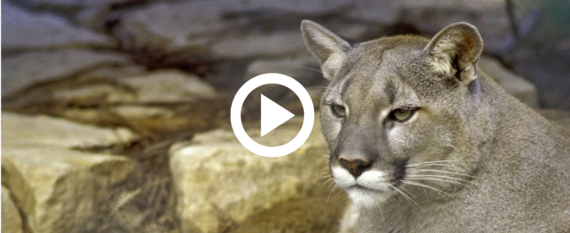 Mountain lions are one of two large predators that remain in Texas (black bears are the other), and you may know them as cougars, pumas or panthers. Contrary to popular belief, they're not endangered and are found all over Texas. But they're very shy and rarely seen by people.
These big cats avoid developed areas, and that willingness to adapt combined with a secretive nature have helped mountain lions continue to survive in the wild. Read the Texas Parks & Wildlife magazine story, The Lion King, for more about sightings. If you see a mountain lion, avoid it, for its sake and your own. Let's continue to coexist with these magnificent animals.
The Butterflies Are Coming! Got Nectar?
 The monarchs are headed this way. Their numbers are up, and they'll need to refuel on nectar when they get here, so now is a good time to water your butterfly-friendly autumn blooms and maybe plant a few more.
If you don't have a butterfly garden, Oct.-Dec. is the best time to plant in most of Texas. Your flowers also support other migrating pollinators, like the nosy American snout – read about them in our blog post, A World Full of Butterflies.
Fall migration means it's time to kick off the Texas Pollinator BioBlitz challenge! Take photos of butterflies, bees, hummingbirds and other pollinators, then share them on iNaturalist and social media (#TXpollinators) from Oct. 4 - Oct. 20. You can also take part in events at parks and other sites. Join us – it's free, it's fun!
Return of the West Texas Hummers!
 Each year, from July through Oct., almost every U.S. species of hummingbird passes through West Texas, fueling up on nectar and tiny insects as they head south for the winter. Watch the West Texas hummingbird cam to see these frisky birds in action.
If you care about birds and your community does too, encourage your city to apply to be an official Bird City Texas. We've partnered with Audubon Texas to create this program that will help people protect birds and their habitats where they live. The Bird City Texas certification program is accepting applications through Nov. 29, 2019.
|